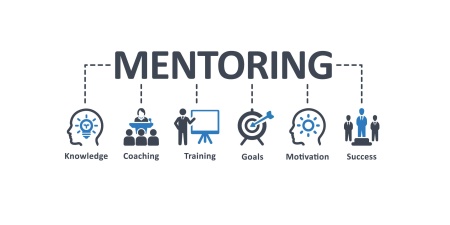A few years ago, my digital marketing agency audited the internet marketing programs of over 175 distributors and manufacturers and found that only 3.4% had a marketing plan. That’s not to say the companies without a plan weren’t spending money on marketing. Rather, they were letting marketing happen instead of creating a list of objectives, dedicating the necessary resources (internal labor, vendor support and advertising dollars) and establishing a system of measurement to allow for an assessment of progress toward specific goals.
As you might imagine, that’s not a great situation. For those committed to taking digital marketing seriously, you’ll need a plan. In this article, I’ve laid out four steps to developing a solid digital marketing plan.
Step 1: Deep Audit and Baseline
As a first step, get an accurate picture of where you currently stand. This includes analyzing the performance of your website, SEO, social media efforts, email campaigns and local page and reputation on Google My Business.
Without a baseline, you can’t know if future efforts are producing results and, more importantly, if the money you spend is making a difference.
How to do this?
Leverage measurement tools to gain insight and document key findings.
Website – For your website’s performance, use Google Analytics and Google Search Console. If you are running a Google Ads program, you’ll want to integrate Google Ads data into Google Analytics too.
If you don’t have goals set up in Google Analytics, take the time to set them up now. Record goal completions by traffic source (search engines, email, social media, direct traffic and referral source), as well as conversion path (form fills, phone calls, emails, live chat sessions, successful orders).
Social Media – To assess the performance of your social media efforts, you should use the tools associated with those platforms or tools like Sprout Social or Hootsuite that aggregate this data across multiple platforms.
Email Marketing – Just about every email marketing and marketing automation platform has native performance measurement tools. Use these tools plus insights gained through Google Analytics to assess how email recipients engage with your email content and then engage with content on your website.
Google My Business allows users to quickly find information like hours, phone number, driving directions, links to a business’ website, and customer reviews. You can access data related to the performance of your Google My Business page by logging into your account. You’ll be able to see how many times your page was viewed, how viewers found your page (i.e. they searched for your company by name or Google displayed your page based on a search phrase entered by a Google user), how many phone calls were generated by people clicking on your phone number, and how many people clicked to get driving directions.
Step 2: Competitive Analysis
Once you’re done documenting your program’s performance through an audit and establishing a performance baseline, it’s time to take a look at your competitors. Like the audit process, you should look at their website, digital ad campaigns, social media activity, email campaigns and local search efforts (i.e. are they actively building their number of positive reviews online).
Going through this process will allow you to identify your strengths and weaknesses as compared to your competitors. It will also give you great ideas about what you can be doing better.
How to do this?
The best way to assess the makeup and effectiveness of a competitors’ marketing efforts is to be vigilant about what they are doing. In other words, stalk them.
Website – Visit their website to understand how they are communicating with customers, what tools and services are available (training, customer rewards programs, email subscription options, etc.), how their content is laid out and what conversion paths are set up (i.e. contact forms, live chat, online purchasing, phone, driving directions, etc.).
If you want an easy and free way to document all the pages on a competitor’s website, use Screaming Frog to identify the pages on their website and how they are using title tags, descriptions, h1 tags and links to support search engine optimization efforts.
SEO and Google Ads – You should also use SEMrush to assess how your competitor’s websites are performing in the search engines (what keywords they rank for and how much traffic they generate) and to see if they participate in Google Ads (how much they spend, what keywords they bid on and view their ads).
SEMrush also has a compare function so that you can compare your performance to a competitor. Some of this functionality is free and other information requires a license. Contact me if you’re interested in the more advanced reports and I’ll run them for you.
Social Media – At a minimum you should visit their Facebook page to see how often they post and assess their content strategy (recruiting, community involvement, or targeting potential customers).
To see if a competitor is advertising on Facebook search for their page, select it, scroll down until you see “page transparency” and click to “see more”. On the bottom of the page, you’ll see a message indicating whether they are running ads or not. If they are, click “Go to ad library” to view their ads.
Email Marketing – The best way to assess what your competitors are promoting through email is to get on their list. If they have an email subscription option, sign up. Alternatively, fill out a contact form on their website or register to download a technical paper. To avoid being too obvious don’t use a company email address as they might review new contacts and eliminate the Jane Does and competitors.
Google My Business – Search for your competitor by name and town (i.e. “ABC Inc., Syracuse, NY”) and click on their local listing. The key here is to note how many reviews they have, their rating and whether they are actively engaging with people leaving a review.
Step 3: Develop A Marketing Plan
The primary reason for developing a marketing plan is to improve your results and increase your return on investment. Your plan should begin with identifying key strategies and expand to include various tactics. As with any plan, you should develop a timeline, assign responsibilities, allocate a budget and identify success metrics.
How to do this?
We’ve found that in almost every engagement there is low–hanging fruit, which, when picked, generates significant and quick results. Often this is enough to cause your staff to believe in digital marketing and further engage with the process of improvement.
Website – Look to your website for quick SEO wins or ways to improve the conversion rate of visitors – i.e. number of form fills, phone calls (assumes you are tracking calls), emails sent from the website, live chat sessions, or orders placed.
Next, determine what your key objectives are and implement a strategy to meet those objectives. In today’s world this would likely involve making it easier for customers to continue doing business with you. That may mean setting up a customer portal through which orders can be placed, or a way for customers to view their order history or account data.
A public facing ecommerce website will soon be a requirement for all Gas and Welding Suppliers in order to retain customers. The biggest obstacle will be gathering sufficient product data to deliver a satisfactory experience. Suppliers can help by making product data easy to obtain in a web-friendly format. This should include detailed product descriptions, multiple images of an appropriate size, data sheets, manuals, and other data as applicable. All of this information should be easily accessible by distributors.
Amazon, Walmart, Lowes, Home Depot and other major ecommerce sites have set the bar high as far as delivering a great customer experience is concerned. Falling short of that bar will result in customers opting for a better experience elsewhere. The good news is that the cost of this advanced functionality is dropping as more plugins and bundles become available.
Beyond ecommerce, let’s not forget about stressing a distributor’s primary advantage over online sellers – the ability to provide added value and create strong relationships with customers.
Take training for example. Be sure to build out easy-to-access-and-use paths to content like training calendars and sign up forms, and videos of past training sessions.
Finally, leverage the fact that you’re the expert and make product information and specifications and staff contact information easy to access.
Local Search – Set up or claim your Google My Business page and begin a program to generate positive reviews. Oh, and don’t forget to respond to all reviews – positive and negative.
Search Engine Optimization – SEO is really important. Today, SEO starts with a clean, well-organized website and great content.
At the highest level, SEO should be included in every website build project as well as continuously after launch. Each page on your website should include basic SEO elements like page titles, descriptions, h1 tags as well as schema markup code that you can add to your HTML to improve the way search engines interpret and display your page on a search engine results page.
Links within and to your website are still very important. Internal links should be defined during the website build content strategy process and reevaluated as new content is added or as a way to improve results. Internal links – from one page to another – let Google know how content is related and the hierarchy of your content. Links from other websites to your site are seen as votes of confidence for the quality of your content, and collectively reflect the relative authority of your website.
All of this contributes to improved ranking.
Digital Advertising – Digital advertising can range from a Google Ads search and retargeting program to geo fencing your competitors and pushing ads to their customers.
Advanced capabilities included under Google Ads customer audiences allow you to target individuals searching for specific terms like a competitor’s name or website address, or terms likely to only be used by your tech savvy target audience.
If I were putting together a list of digital ad priorities, I might start in this order:
- Google Ads search and retargeting ads
- Bing AdCenter
- Social ads (Start with Facebook)
- Programmatic ads outside of the Google network.
Email marketing – Leverage your email lists to push educational and promotional content. Start with a two parts educational content to one part promotional content mix and refine over time to maximize results.
Social Media – For a distributor, I’d use social media to stress the fact that you are local, care about your community and are experts in your field.
Social media is a great way to open doors and cement relationships. However, I would focus on my website first. Then, once it’s a solid performer, I’d invest in social media.
Step 4: Measure And Adjust
The most important and exciting part of digital marketing is the ability to measure results, make adjustments and continue improving.
How to do this?
For most business-to-business companies, it makes sense to set up a quarterly reporting initiative. Monthly would be better, but typically in the b2b world there isn’t enough data to draw conclusions about the success or failure or specific initiatives monthly.
You should look at the high level metrics – traffic volume and sources, goal completions and cost per lead – but also dig deeper into results derived through different tactics like efforts to improve conversion rates, promote a new website feature, or improve an ad campaign.
On an annual basis, reaudit your program (Step 1) and complete a competitive analysis (Step 2).
Summary
Following these four simple steps will put you on a path toward success and sticking to this process with yield long term benefits.
If you get stuck or have a question, please reach out. I’m happy to help. Best of luck!









